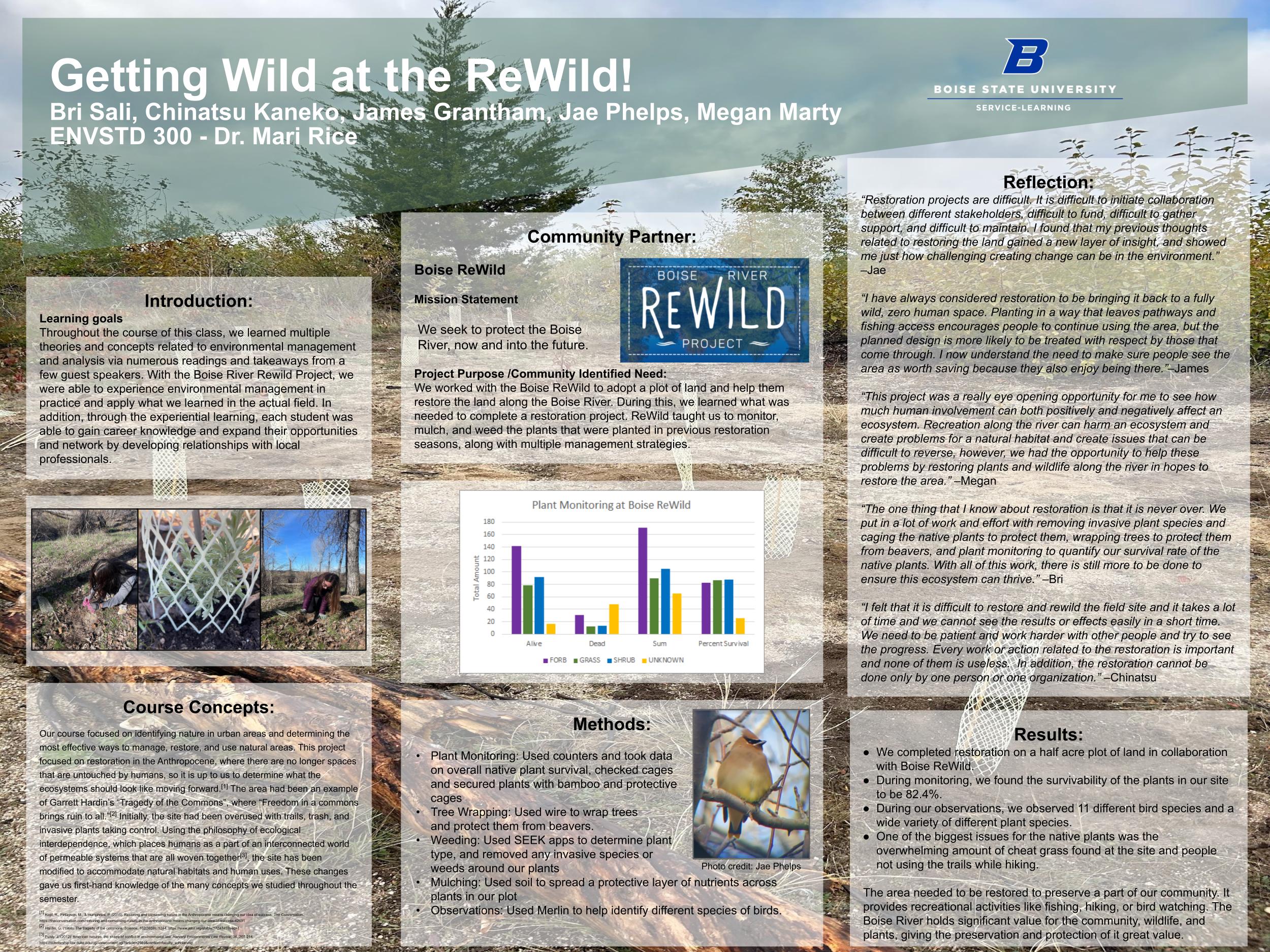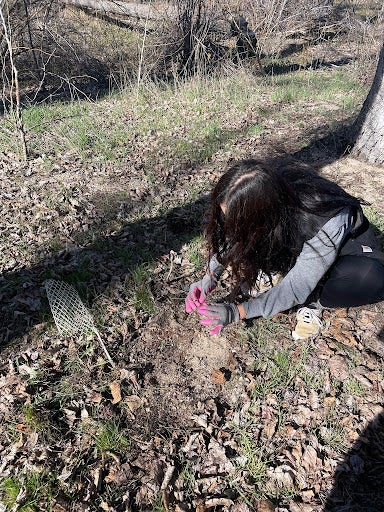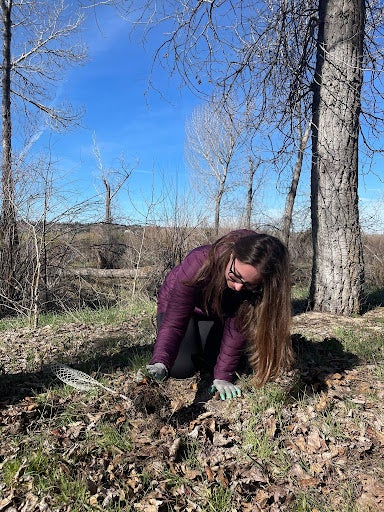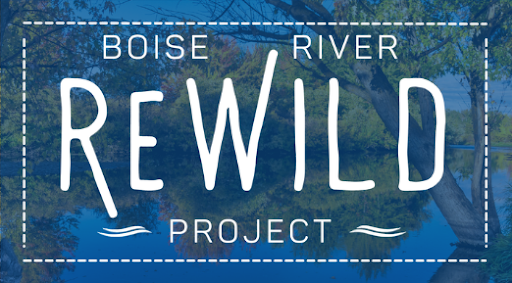Bri Sali, Chinatsu Kaneko, James Grantham, Jae Phelps, Megan Marty
Dr. Mari Rice – ENVSTD 300
Boise ReWild – Golden Eagle Audubon Society

Introduction
Learning Goals:
Throughout the course of this class, we learned multiple theories and concepts related to environmental management and analysis via numerous readings and takeaways from a few guest speakers. With the Boise River Rewild Project, we were able to experience environmental management in practice and apply what we learned in the actual field. In addition, through the experiential learning, each student was able to gain career knowledge and expand their opportunities and network by developing relationships with local professionals.

Reflection
“Restoration projects are difficult. It is difficult to initiate collaboration between different stakeholders, difficult to fund, difficult to gather support, and difficult to maintain. I found that my previous thoughts related to restoring the land gained a new layer of insight, and showed me just how challenging creating change can be in the environment.” –Jae
“I have always considered restoration to be bringing it back to a fully wild, zero human space. Planting in a way that leaves pathways and fishing access encourages people to continue using the area, but the planned design is more likely to be treated with respect by those that come through. I now understand the need to make sure people see the area as worth saving because they also enjoy being there.”–James
“This project was a really eye opening opportunity for me to see how much human involvement can both positively and negatively affect an ecosystem. Recreation along the river can harm an ecosystem and create problems for a natural habitat and create issues that can be difficult to reverse, however, we had the opportunity to help these problems by restoring plants and wildlife along the river in hopes to restore the area.” –Megan

“The one thing that I know about restoration is that it is never over. We put in a lot of work and effort with removing invasive plant species and caging the native plants to protect them, wrapping trees to protect them from beavers, and plant monitoring to quantify our survival rate of the native plants. With all of this work, there is still more to be done to ensure this ecosystem can thrive.” –Bri
“I felt that it is difficult to restore and rewild the field site and it takes a lot of time and we cannot see the results or effects easily in a short time. We need to be patient and work harder with other people and try to see the progress. Every work or action related to the restoration is important and none of them is useless. In addition, the restoration cannot be done only by one person or one organization.” –Chinatsu
Community Partner: Boise ReWild
Mission Statement:

“We seek to protect the Boise River, now and into the future.”
Purpose/Community Identified Need:
We worked with the Boise ReWild to adopt a plot of land and help them restore the land along the Boise River. During this, we learned what was needed to complete a restoration project. ReWild taught us to monitor, mulch, and weed the plants that were planted in previous restoration seasons, along with multiple management strategies.
Course Concepts
Our course focused on identifying nature in urban areas and determining the most effective ways to manage, restore, and use natural areas. This project focused on restoration in the Anthropocene, where there are no longer spaces that are untouched by humans, so it is up to us to determine what the ecosystems should look like moving forward.[1] The area had been an example of Garrett Hardin’s “Tragedy of the Commons”, where “Freedom in a commons brings ruin to all.”[2] Initially, the site had been overused with trails, trash, and invasive plants taking control. Using the philosophy of ecological interdependence, which places humans as a part of an interconnected world of permeable systems that are all woven together[3], the site has been modified to accommodate natural habitats and human uses. These changes gave us first-hand knowledge of the many concepts we studied throughout the semester.
Methods
Plant Monitoring: Used counters and took data on overall native plant survival, checked cages and secured plants with bamboo and protective cages.
Tree Wrapping: Used wire to wrap trees and protect them from beavers.
Weeding: Used SEEK apps to determine plant type, and removed any invasive species or weeds around our plants.
Mulching: Used soil to spread a protective layer of nutrients across plants in our plot.
Observations: Used Merlin to help identify different species of birds.
Results

We completed restoration on a half acre plot of land in collaboration with Boise ReWild. During monitoring, we found the survivability of the plants in our site to be 82.4%. During our observations, we observed 11 different bird species and a wide variety of different plant species. One of the biggest issues for the native plants was the overwhelming amount of cheat grass found at the site and people not using the trails while hiking. The area needed to be restored to preserve a part of our community. It provides recreational activities like fishing, hiking, or bird watching. The Boise River holds significant value for the community, wildlife, and plants, giving the preservation and protection of it great value.